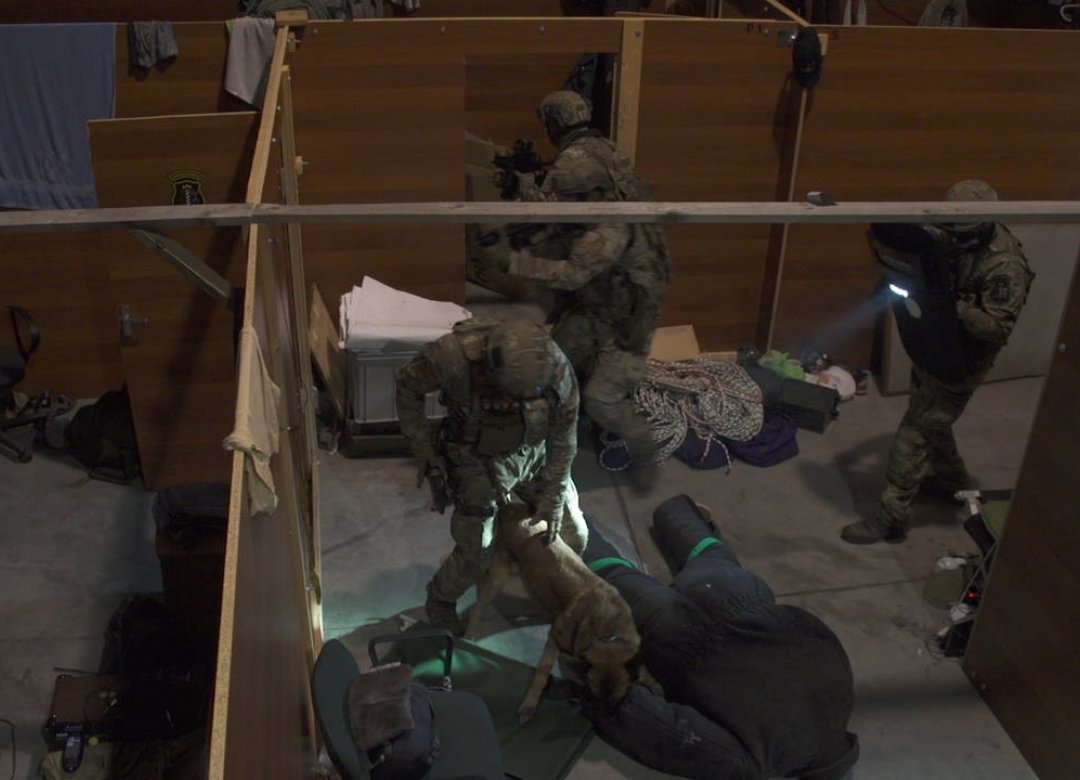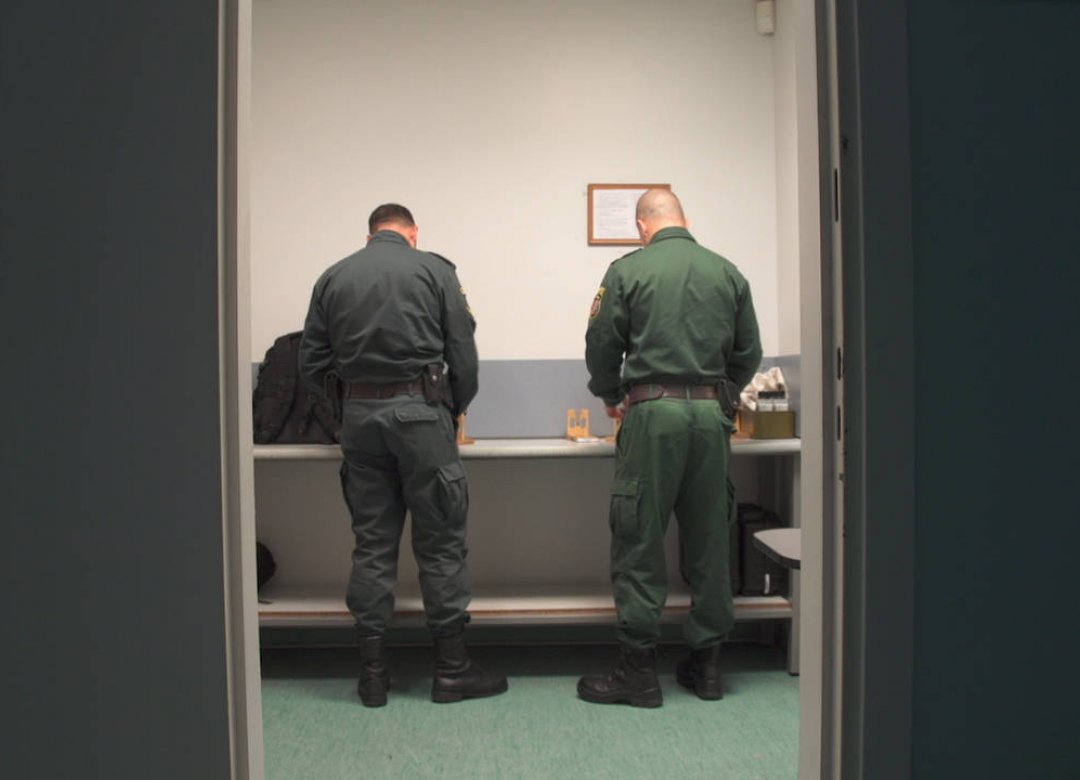Synopsis
A fence crosses a landscape, a man with a machine gun in camouflage clothes guards it. The documentary "All These Walls“ moves along the Baltic border with Russia. The surrounding landscapes are under permanent surveillance. A storm is prophesied by the voice that accompanies the film like a storyteller. She speaks of weather changes, of an approaching wind. All protagonists seem to be waiting for something.
Meanwhile, we watch the Terror Unit of the Latvian Border Patrol during their exercises. They seem to be preparing for an undefined danger. Questions raised by the film are fragmentary answered by the Latvian NATO pastor. He speaks about the war in Ukraine, the fears and worries in the Baltic states, about Christian values.
A young border guard describes the Baltic border as the spine of Europe, he declares that it is our duty to protect it with all our strength. In contrast to this presentation Images of a boredom, a never ending state of waiting gives a different perspective on their daily grid. It remains unclear whether the concerns of an invasion are justified. Even the NATO doesn’t want to answer this question. Instead, the press spokesman of the Baltic NATO forces talks about meetings, about contracts and years. The annexation of Ukraine leaves traces in the Baltic landscapes, leaves behind noticeable concerns and raises fears of the past.
The film captures a transitory state, a moment between the before and the after. Between an invisible border and the physical construction of it. Residents warn the film crew about the troubles these kind of shootings might cause, border guards emphasize that taking images of the border is not allowed. In this so called "border zone" there is an almost arbitrary idea of what can be publicly communicated and what can not. And so the film leaves behind the unclear, queasy feeling that the Ukrainian war has provoked, drawing an image of a state of powerlessness, between security and danger, between war and peace.
Meanwhile, we watch the Terror Unit of the Latvian Border Patrol during their exercises. They seem to be preparing for an undefined danger. Questions raised by the film are fragmentary answered by the Latvian NATO pastor. He speaks about the war in Ukraine, the fears and worries in the Baltic states, about Christian values.
A young border guard describes the Baltic border as the spine of Europe, he declares that it is our duty to protect it with all our strength. In contrast to this presentation Images of a boredom, a never ending state of waiting gives a different perspective on their daily grid. It remains unclear whether the concerns of an invasion are justified. Even the NATO doesn’t want to answer this question. Instead, the press spokesman of the Baltic NATO forces talks about meetings, about contracts and years. The annexation of Ukraine leaves traces in the Baltic landscapes, leaves behind noticeable concerns and raises fears of the past.
The film captures a transitory state, a moment between the before and the after. Between an invisible border and the physical construction of it. Residents warn the film crew about the troubles these kind of shootings might cause, border guards emphasize that taking images of the border is not allowed. In this so called "border zone" there is an almost arbitrary idea of what can be publicly communicated and what can not. And so the film leaves behind the unclear, queasy feeling that the Ukrainian war has provoked, drawing an image of a state of powerlessness, between security and danger, between war and peace.
Articles

22. 2. 2019
East Doc Shorts Pitch 2019 – projects and experts
Five projects in the late production/post-production stage will pitch in front of decision makers, festival and sales representatives. The pitch will take place on March 13 at 10 am in Cervantes Institute and is open to public.
read more
Gallery


